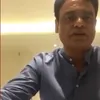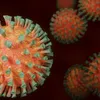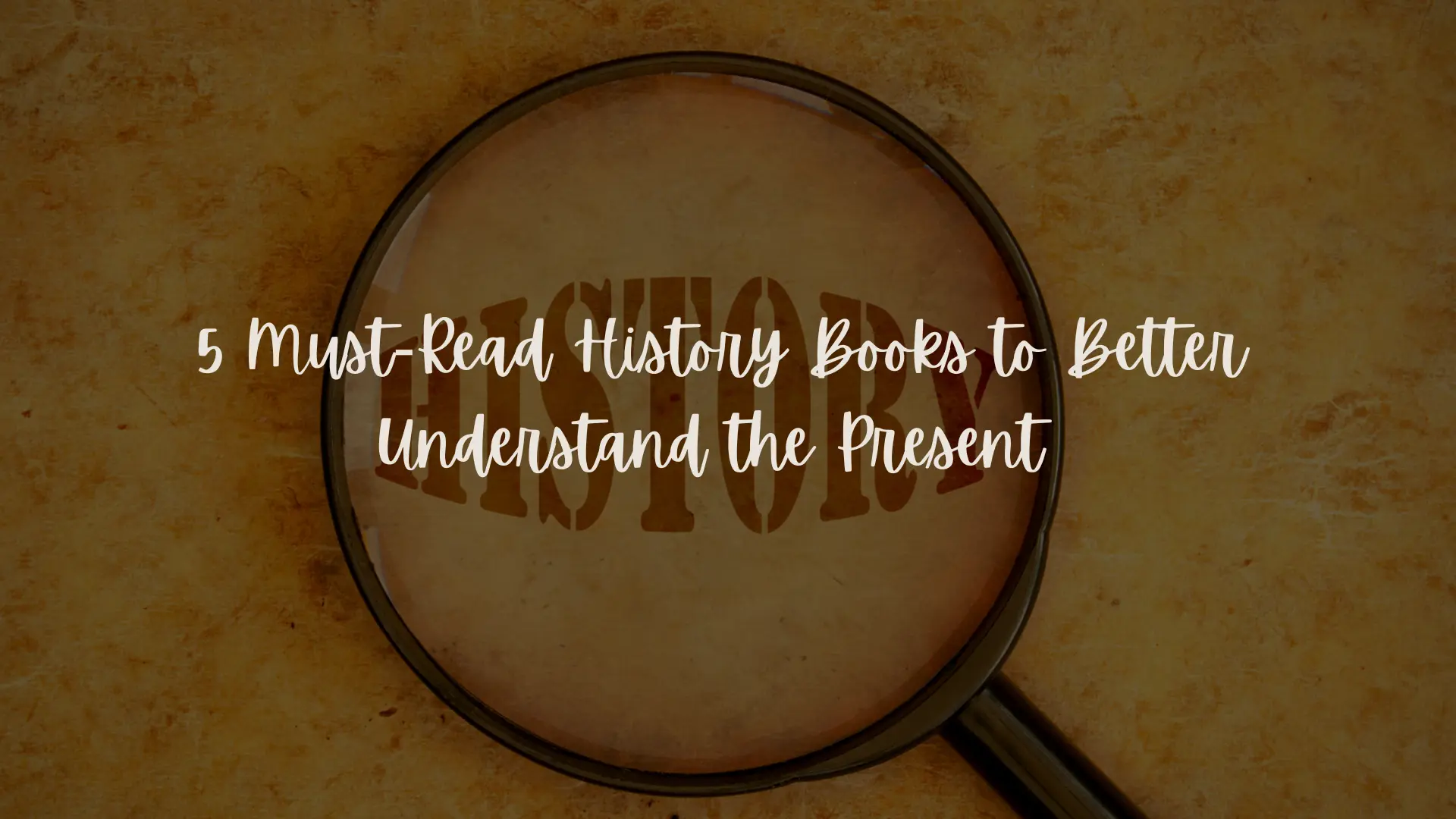[Good Governance] We are introducing relaxations to help the economy return to normalcy: K. Sudhakar, Minister for Medical Education, Government of Karnataka
Speaking to Social Story, the minister outlined the state’s plan for opening up the economy, emergency healthcare, oxygen and lifesaving drugs in Karnataka
Karnataka has always been a pioneer in technology and innovation. The state has been leveraging smart tech solutions in the battle against COVID-19 from Day 1. From control rooms, helplines, bed allocations, technology has played a key role in the state’s campaign against the pandemic.
In an interview with SocialStory, K. Sudhakar, Minister for Medical Education, Government of Karnataka, shares how the state is planning to open the economy, while curbing the COVID-19 numbers in the state.
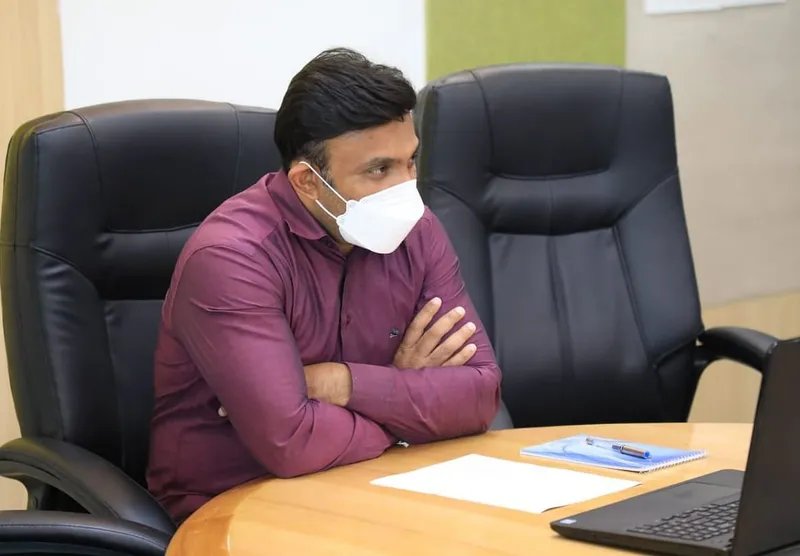
K. Sudhakar, Minister for Medical Education, Government of Karnataka
Image: Twitter
With the second phase slowing down in many districts of Karnataka, How is the Government of Karnataka planning to open up the economy of the state post the second wave?
The state’s Covid-19 Technical Advisory Committee has recommended certain criteria for easing restrictions based on positivity rate and other factors. It has advised that curbs can be lifted if test positivity rate (TPR) is below 5 percent.
There are about nine districts including Bengaluru where TPR is below 5 percent. About four districts have TPR above 10 percent and the rest of them have TPR between 5 to 10 percent.
Considering the economic impact, we have already allowed industries to operate at 50 percent capacity except the garment industry, which is operating at 30 percent capacity. The relaxation for essential shops, including street vendors, is now extended till 2 PM. All construction activities are allowed, and shops pertaining to construction activities, like those selling cement and steel, are allowed to open.
With all these relaxations, the manufacturing sector is set to return to normalcy. However we have a huge service sector, which needs a very calibrated approach.
Although hotels and restaurants are open for parcel and takeaway, we have received requests to allow dine-in with limited occupancy. We are considering allowing hotels, restaurants, malls and non-essential shops to open with some restrictions and limited occupancy. Even public transport might be resumed with certain restrictions.
However, the restrictions on marriages, functions and public gatherings will continue as they are high-risk events. Schools and colleges will also continue to remain closed.
How did the Government of Karnataka handle the oxygen allocation in the state?
Two Pressure Swing Adsorption (PSA) oxygen generation plants received through foreign aid from Israel have been set up and made operational at district hospitals, and government hospitals in Yadgiri and Kolar Gold Fields.
We received 140 MT oxygen through ISO containers and an additional four ISO containers of 20 MT.
Three facilities getting 1,000 litres per minute (LPM) capacity PSA plants with Defence Research and Development Organisation (DRDO) support at CV Raman Hospital, Bengaluru; ESI Medical College, Kalburgi; and Koppal Institute of Medical Sciences, Koppal. Nearly 380 oxygen cylinders and 800 oxygen concentrators have been received from the Government of India. An additional 1,600 cylinders have
been allotted.
In addition, a 43 KL liquid medical oxygen storage capacity is being augmented at Mysuru, Chikkaballapura, Kolar, Ramanagar, and Karwar districts. More than 4,000 MT oxygen is received through 31 oxygen express trains.
We launched an innovative solution called 'OxyBus' service to aid COVID-19 patients during emergencies. This is a makeshift solution – a public transport bus fitted with oxygen cylinders – that supports up to eight patients at a time, who are looking for oxygen beds. This solution has saved the lives of several patients seeking oxygen beds in the crucial hour.
Over 20 such units will have been set up near major government hospitals and triage centres in Bengaluru, and all district hospitals across the state. The state transport operator KSRTC has provided buses for this initiative.
Apart from this, we have provided oxygen concentrators to each district.
How have you been using technology to fight COVID-19 better?
We have developed several apps and portals to facilitate every facet of pandemic management and increase efficiency and transparency. This includes:
- Application for contact tracing: This application enabled the sharing of contacts across the state and building a database of primary and secondary contacts – the most critical step to contain the pandemic.
- Corona watch: Through this application, the location of corona affected patients can be tracked and their movement history of the last 14 days can be recorded. A containment watch app has also been developed to undertake surveys in containment zones and ensure the provision of essential services.
- Travel: The Seva Sindhu Portal of Government of Karnataka was used extensively to issue e-Pass for movement of persons into the state during different phases of lockdown and unlock period. The data from the Seva Sindhu app was synced to the Quarantine Watch app to help monitor and implement the isolation and quarantine process. Quarantine Watch application enabled- self-reporting by people in-home quarantine.
- Health watch: The state-wide household survey was conducted to map high-risk households and vulnerable populations through Karnataka Health Watch, a mobile application to capture real-time data. Out of 1.68 crores households, 1.5 crores have been surveyed through this application and 60 lakh households were identified as vulnerable. The survey of older adults with comorbidities and pregnant women was done through tele-consultation from a state-of-the-art tele-ICU facility in Bengaluru, led by the state’s best doctors.
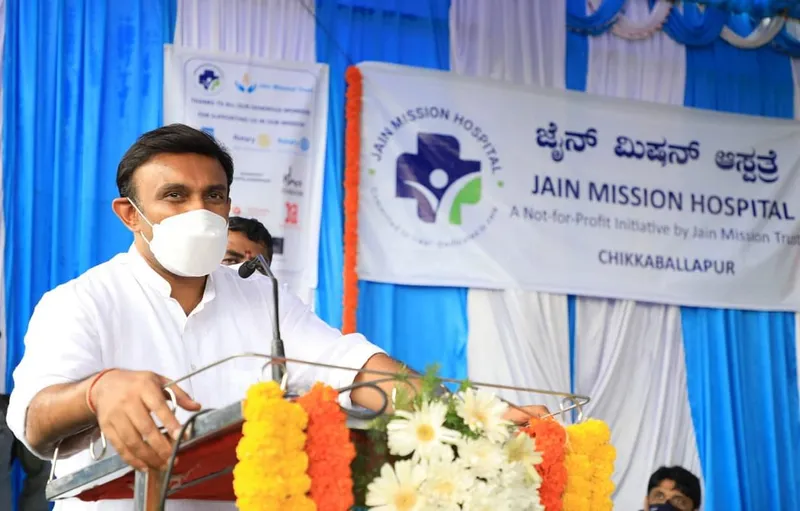
The state has launched a tele ICU programme with support from intensivists in private hospitals to train the ICU staff working in different medical colleges and district hospitals.
Image: Twitter
Have you set up any other support systems?
The state government activated the Apthamitra Helpline, a free teleconsultation to assess those having medium- to high-risk infection and ensuring timely screening, testing, and treatment. The technological innovations not only tracked the most vulnerable in the state, but also guided the state to make decisions on graded relaxation of lockdown norms in safer areas and earmarking high-risk containment zones.
We launched a tele ICU programme in Karnataka with support from intensivists working in private hospitals to train and guide the ICU staff working in different medical colleges and district hospitals. This has been of immense help in providing quality care at the district level and saving lives. This model is getting replicated in other states now.
The Karnataka Private Medical Establishments (KPME) portal was used for influenza-like illness (ILI) and severe acute respiratory infection (SARI) surveillance strengthening. Reporting of all hospitals was made mandatory through the KPME portal made by the state. Along with this, districts have used various forms of technology like Google forms and Epicollect to make tracking of cases and ensuring swab collection possible.
Can you share some of your key learning?
The capacity building initiative of the workforce was implemented through a multi-pronged approach. Integrated Disease Surveillance Programme (IDSP) with technical support from WHO India, which conducted workshops at the state and district level on the basic epidemiology, public health response, clinical management, and infection control practices.
This was followed by a detailed training programme focused on clinical aspects of COVID-19 management for secondary and tertiary institutions including teaching hospitals led by Rajiv Gandhi University of Health sciences.
More than 2 lakh frontline workers have been trained so far using this platform. The state was quick to launch a YouTube Channel, Jagruti Karnataka, that has been in use to disseminate training to the field-level health workers, including departments like education, revenue, Panchayati Raj Institutions (PRIs) on risk communications, contact tracing, conducting monitoring surveys, etc.
A state-of-art control room was set up in record time of 24 hours in Bruhat Bangalore Mahanagara Palike (BBMP) corporation body in early March 2020, with facilities like 24*7 control and command centre; virtual training and video conferencing facilities; GIS mapping of cases and contacts; heat mapping technology for containment zone and cluster; immersive technology for large data management of contact tracing and quarantine; real-time tracking of ambulance services and disinfection procedures; production and dissemination of IEC; and daily media bulletins.
While the BBMP war room focused on the response in Bengaluru, similar control rooms were established for crisis management throughout the state.
Tell us about how you managed the allocation of Remdesivir?
Thanks to increased production of Remdesivir, the supply of the drug has been deregulated now. However in the peak of the second wave the government had an uphill task of ensuring timely and sufficient supply of the drug.
In order to bring transparency in the allocation of Remdesivir, a tech-driven system was developed in which patients received a SMS informing which hospital provided the medicine against the SRF ID. Citizens could also check info using the link. https://www.covidwar.karnataka.gov.in/service2
If Remdesivir is allocated against the SRF ID and the hospital has not provided it to the patient, a facility is provided in the same link to report it to the government. This has helped the government in curbing black marketing and misuse of Remdesivir. We have also brought a lot of improvement in the BBMP bed management software in quick time. So technology has always been a partner in our battle against pandemic.
Edited by Diya Koshy George

![[Good Governance] We are introducing relaxations to help the economy return to normalcy: K. Sudhakar, Minister for Medical Education, Government of Karnataka](https://images.yourstory.com/cs/5/f5a7f3304b1211e9b6645b8ae897d03e/Imageo65p-1624367643216.jpg?mode=crop&crop=faces&ar=2%3A1&format=auto&w=1920&q=75)
